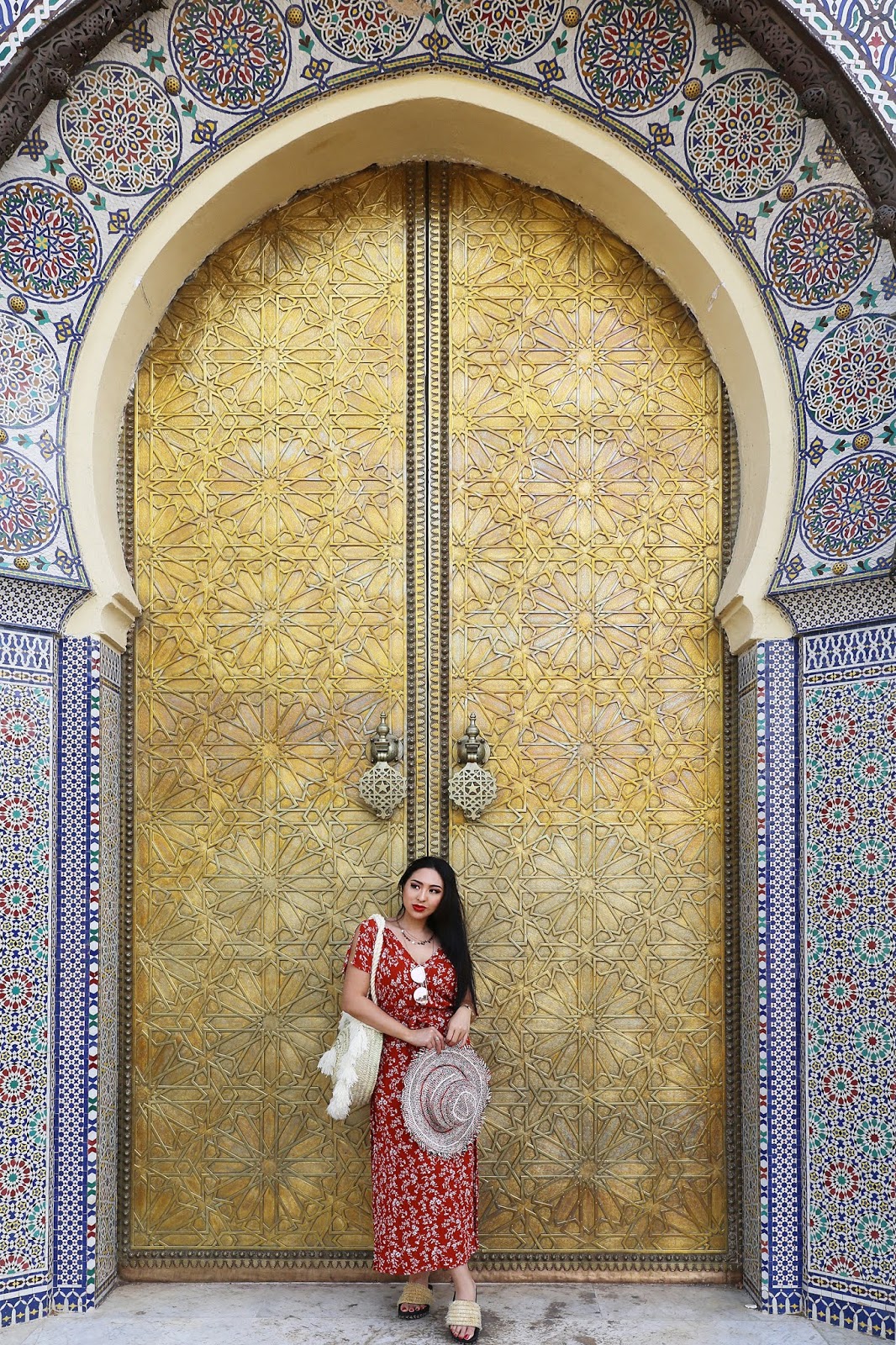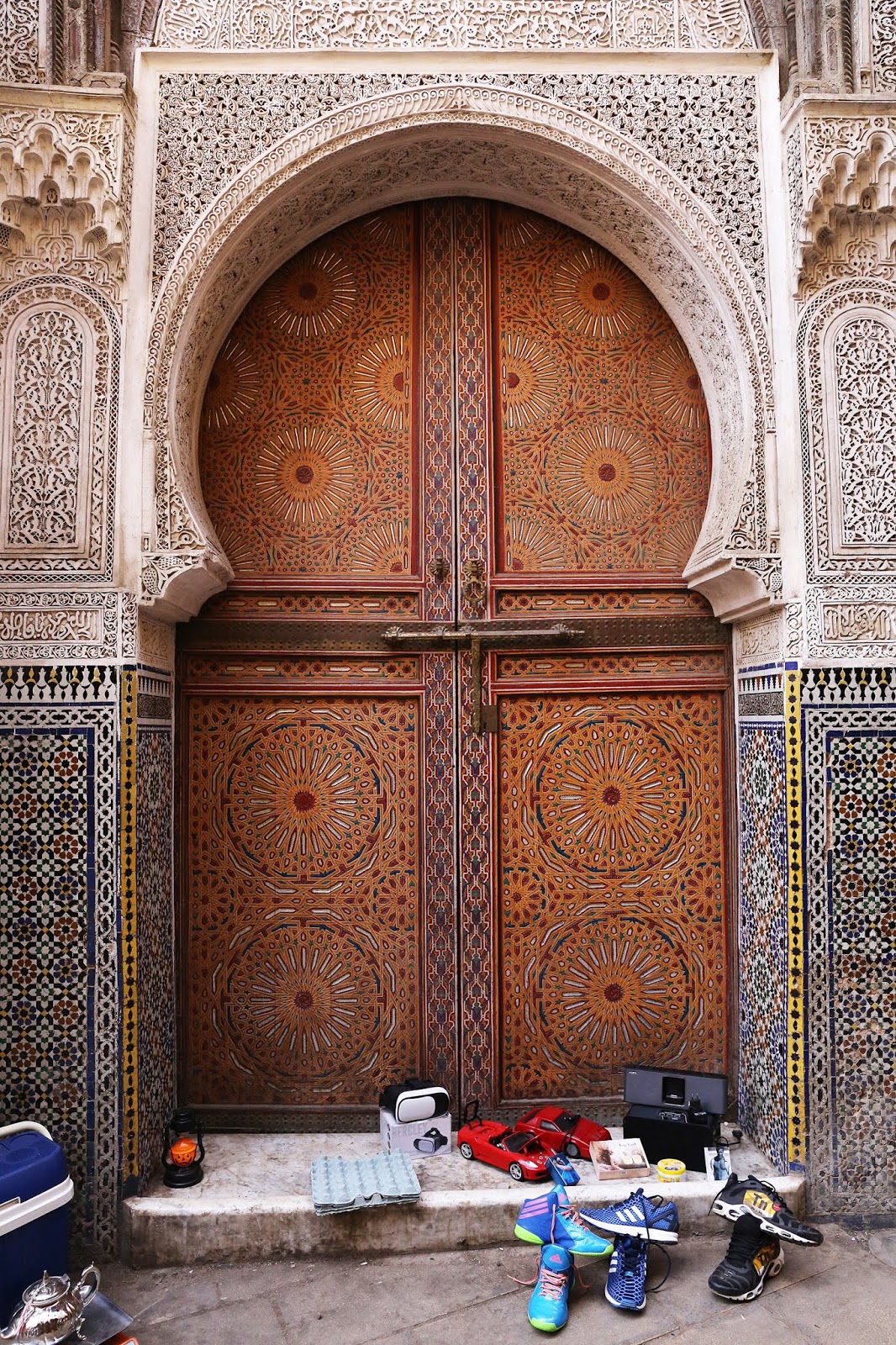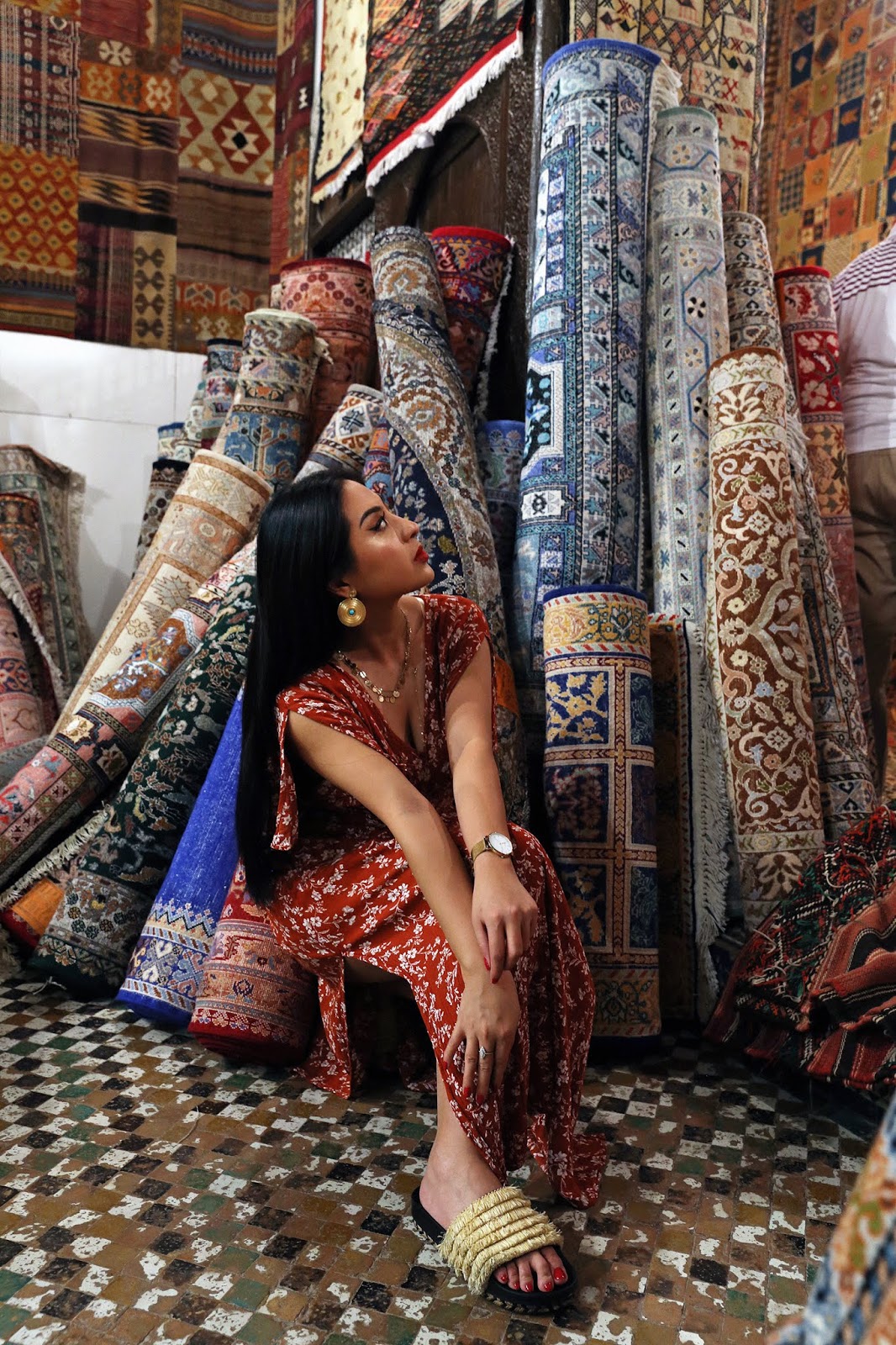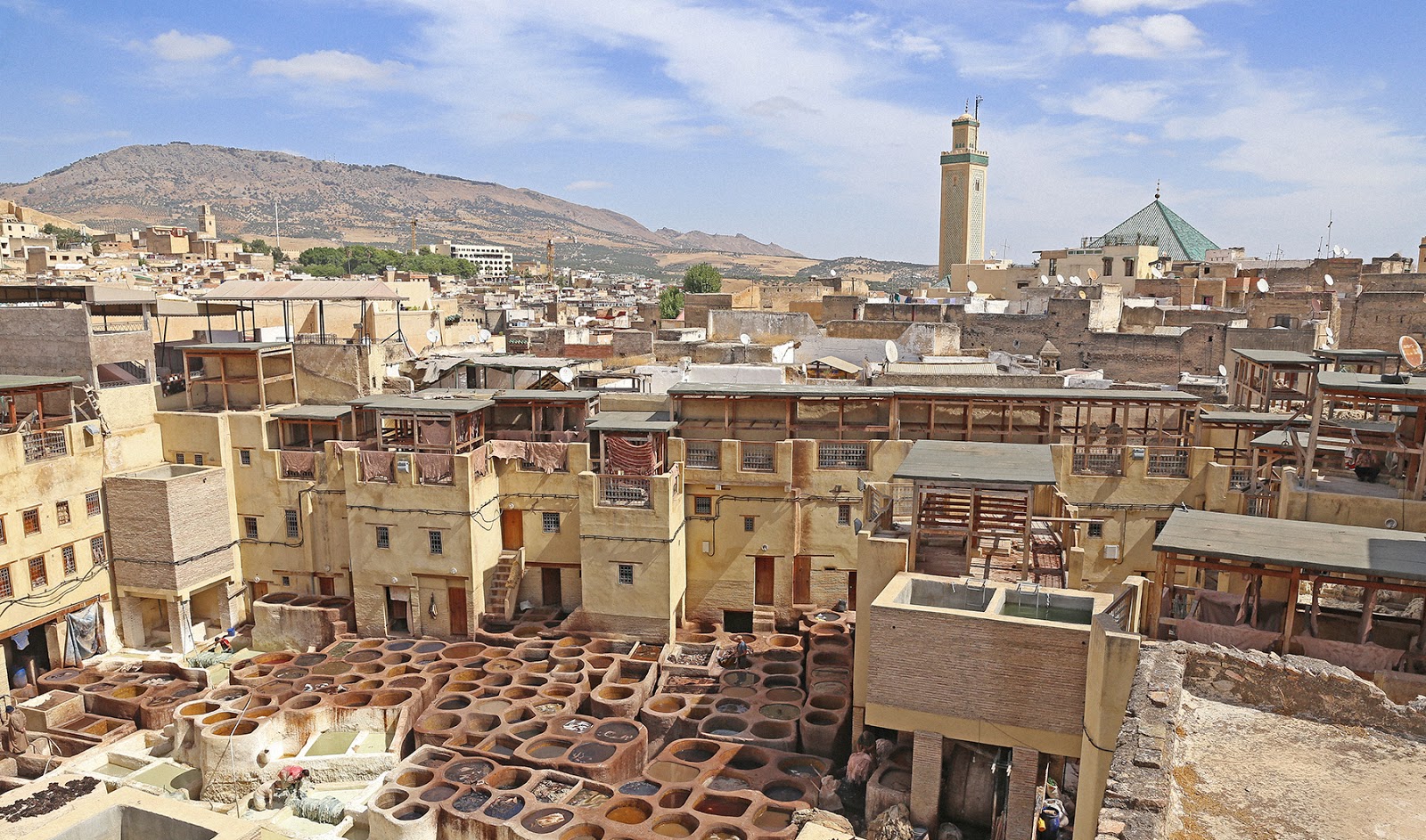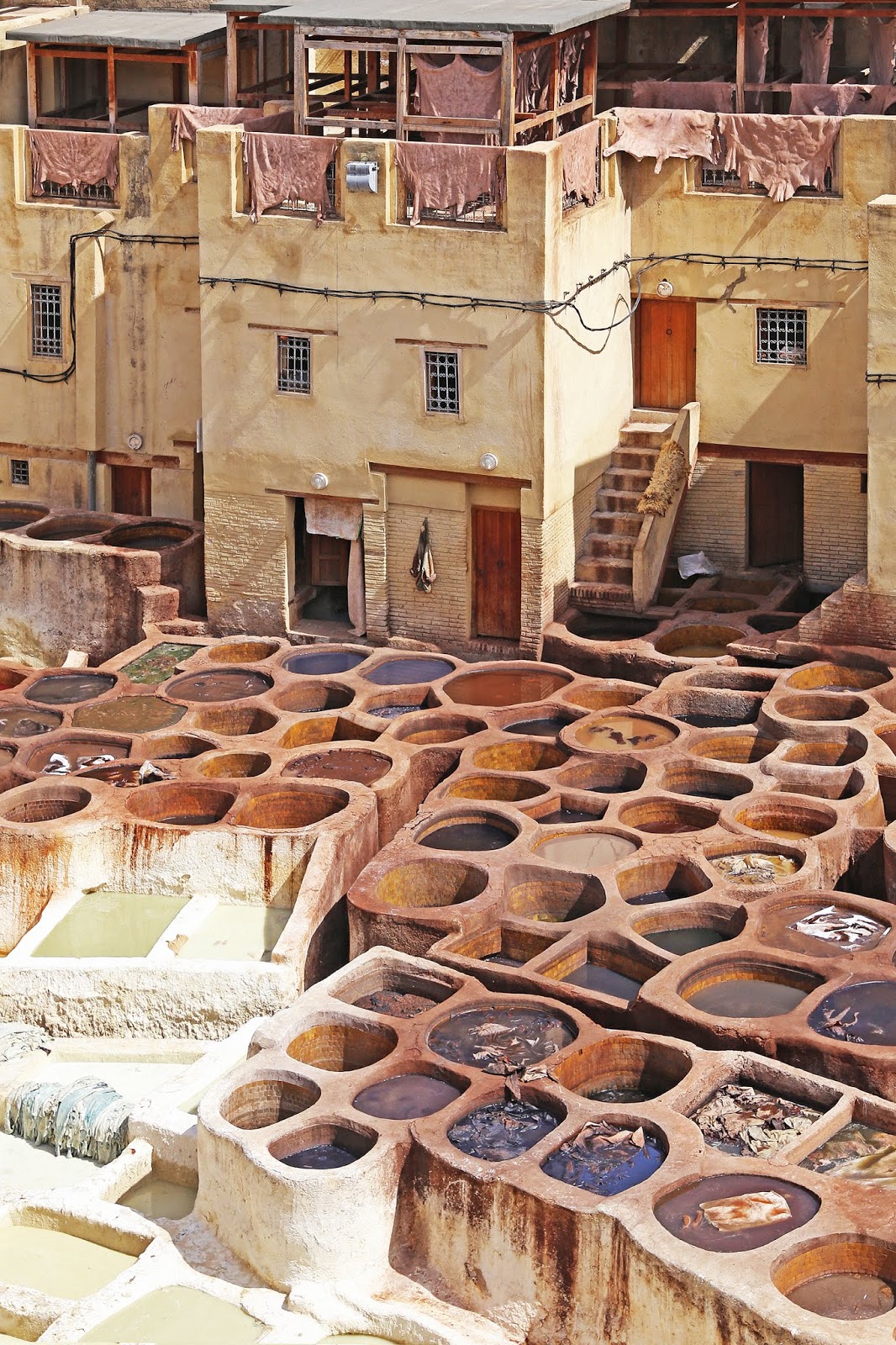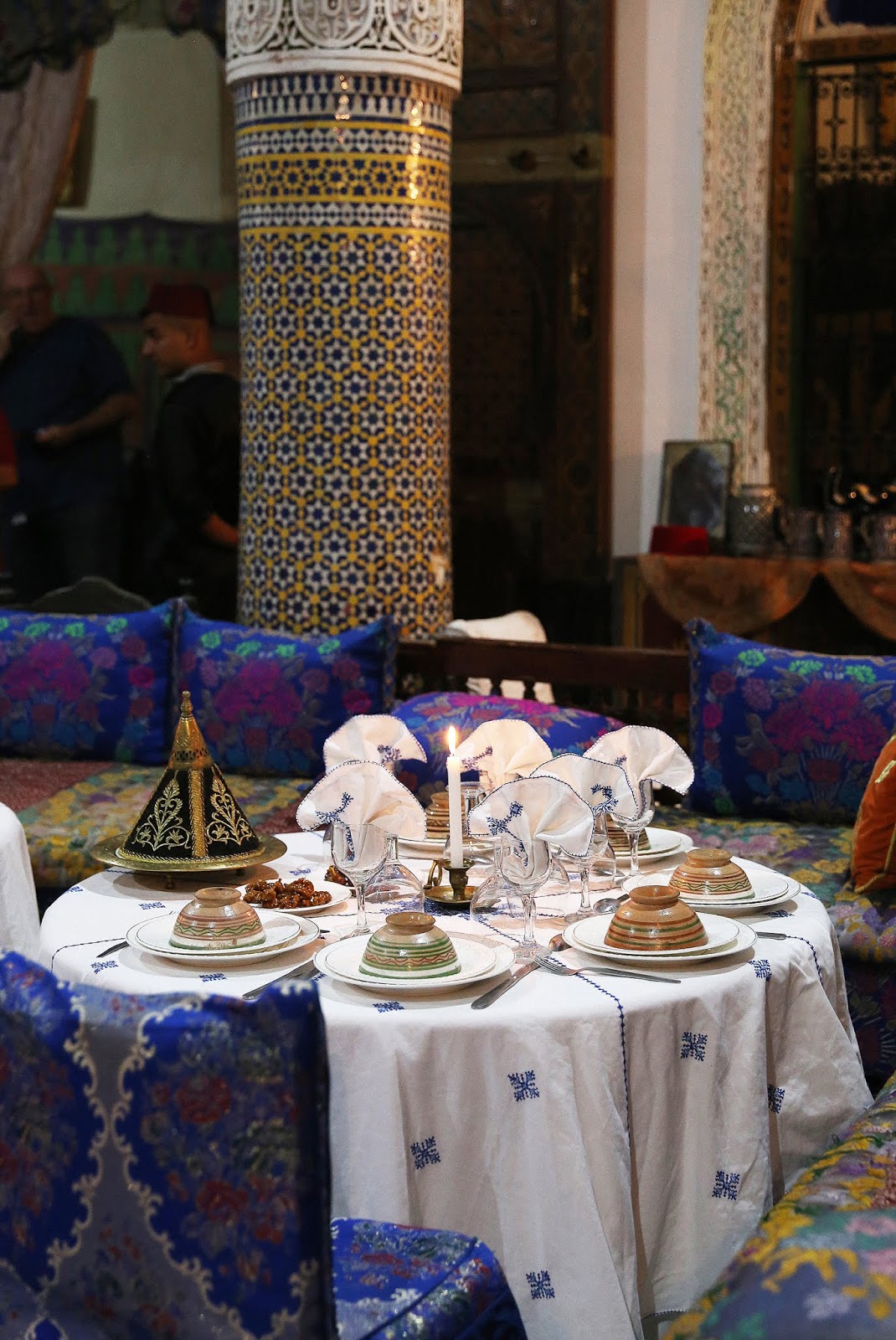SOUK OF THE DAY: A STATE OF A-FEZ
THE MOROCCO DIARIES, PART 3 of 10: FEZ
What a way to reach a climax. I had begun my tour of Morocco’s four Imperial Cities with Rabat (current and deceptively modern but for its UNESCO Heritage landmark), followed by Meknes (at a glance, modest and even shabby but home to one of the world’s greatest doors). The next destination would be Fez; arguably the most exciting of the country’s former capitals (although Marrakech would beg to differ; it being Fez’s biggest competition). What is indisputable is that Fez is the oldest of the Imperial Cities, first established as capital in the ninth century under Sultan Idriss II, a great-great grandson of the Prophet Muhammad. Fez’s status as capital has since come and gone with different dynasties, but its fixture in the imagination has remained, for its famous medina - the largest in the world - and its souks, the likes of which are nothing like anything else in the country...
THE ROYAL PALACE OF FES
As if to announce its importance, the seven gilded gates of The Royal Palace of Fez radiate with the power of the sun. Even on an overcast day, like when I visited, the famous brass doors seem to glow with a light from within. Or perhaps the shine is thanks to the many tour guides who pluck the lemons from the nearby trees and rub the juices on the palace gates to demonstrate the fruit’s astringent properties. One can only wonder; is it the brass or is it the lemon? Fruit for thought. Likewise, the Golden Gates are a pathway to the imagination - The Royal Palace of Fez is closed to the public, so visitors can only fantasise about the grandeur behind these imposing doors.
But doors that do not open are no place to linger. Not when the greatest attraction of this Imperial City is in fact Fez el Bali: the medieval city, or simply, the Medina.
FEZ EL BALI: THE MEDINA
Shopping in the souk of the Medina also affords one a glimpse of of daily life in Fez. Home to half of Fez’s population, little has changed in this medieval city. The Medina is a maze - a warren of narrow alleys, many of them barely wide enough for a single person to navigate. Some streets, especially the ones leading to homes, are so low you have to stoop to walk through. In the Medina, mules and donkeys have right of way as they are the only form of transportation here - the beasts of burden not only deliver supplies to the little shops in the souk but also carry waste from the homes. To the uninitiated, every step is a potential adventure, not just because the roads are unpaved and exposed with planks of wood laid over some of the larger potholes, but also because it’s all too easy to get lost in the warren - which I daresay is part of the fun.
I whiled away an entire afternoon in the Medina. From catching glimpses of mosques; stepping out of the way when I heard the shout of “balak, balak!” (moving aside, here comes a mule laden with goods), watching people go about everyday life, and doing some window-shopping of my own; the Medina was a thoroughly gratifying, if dizzying experience.
Shopping in the souk of the Medina also affords one a glimpse of of daily life in Fez. Home to half of Fez’s population, little has changed in this medieval city. The Medina is a maze - a warren of narrow alleys, many of them barely wide enough for a single person to navigate. Some streets, especially the ones leading to homes, are so low you have to stoop to walk through. In the Medina, mules and donkeys have right of way as they are the only form of transportation here - the beasts of burden not only deliver supplies to the little shops in the souk but also carry waste from the homes. To the uninitiated, every step is a potential adventure, not just because the roads are unpaved and exposed with planks of wood laid over some of the larger potholes, but also because it’s all too easy to get lost in the warren - which I daresay is part of the fun.
I whiled away an entire afternoon in the Medina. From catching glimpses of mosques; stepping out of the way when I heard the shout of “balak, balak!” (moving aside, here comes a mule laden with goods), watching people go about everyday life, and doing some window-shopping of my own; the Medina was a thoroughly gratifying, if dizzying experience.
HOW TO SHOP FOR RUGS (AND MORE) IN THE MEDINAS OF MOROCCO
Not even an hour into exploring the Medina and I had been roped into a lesson on carpet-making. It is said that one is unlikely to leave a souk without being schooled on the art of carpet-making. I can attest to that. I stepped into a a vast, double-height cavern more suited to a cavern of treasure troves than a humble carpet shop. Forget wall to wall carpets; this shop was covered in rugs from the floor up to the walls and touching the ceilings. Needless to say, I was floored. The proprietors, having found a willing audience - I was indeed in the market for those oh-so-trendy Berber rugs, you know, the minimalist white ones with grey lines forming a diamond pattern that you see all over interior design magazines - began the song and dance that is a tale as old as time.
I was presented with a freshly-boiled glass of mint tea. The proprietor encouraged us to open our minds, our hearts, and our pockets (straight to the point, I appreciate that). With a flourish, he explained what made their carpets so unique: 1) Morocco is the only country whose carpets contain triple knots, 2) The carpets are coloured with vegetable dyes: saffron, henna, indigo, 3) The quality of the carpets are regulated and set by the government (however, the prices are not), 4) These carpets that are exactly identical on both sides, the only ones with two weavers working on both sides at the same time... I watched the assistants bring out carpet after carpet, unroll it with much fanfare as the proprietor boomed with pride; all the while sipping on my brew, thinking, the tea, oh the tea!
After the lesson was over, it was time to get down to business. Bargaining is a dance in Morocco, and both the sellers and the shoppers should know these steps. Start to haggle only when you are serious about buying - negotiations are an expression of interest. First: you decline the initial price quoted - the opening figure is always many times higher than a reasonable price. Second, you offer about half as much. Finally, you and the seller move toward a compromise figure, usually 2/3 of the original quote. Axnd then you decide what to do with your gorgeous new rug/copper tea set/leather jacket - do you want to take it with you? Or sent to your hotel? Or shipped via DHL or FedEx to your home address?
CHAOUWARA TANNERIES
Another must-see sight in the Medina of Fez are the Chaouwara Tanneries. The 11th-century tanneries, the oldest in North Africa, are an iconic sight (and smell); using natural methods of producing that have changed little since medieval times. Animal skins are placed in limestone vats, where the hair is soaked off in a solution containing sulphur and pigeon dung before being washed and transferred to the dyeing vats, then dried out on the flat roofs of the buildings around the tanneries. The only way to see the tanneries in action is through one of the many leather shops that surround the site. Ignore the touts, just follow your nose. The ‘pong’ of Chaouwara Tanneries is potent, even on cool days - the sprig of mint visitors are given to sniff do little to hide the stench. But the pungent odour is worth enduring to witness this traditional process, which produces some of the best leather in the world. Naturally, the salesmen who take you up to the roof to see the tanneries hope for a sale, but if you’re not there to buy, a tip for their time will suffice. There are worse places to shop - 1) These are the best selection of leather goods in Morocco, 2) The prices are as good as they get, 3) The business model is ethical (the leather shops form a cooperative with the tannery workers), so the experience is authentic and uniquely Fez.
Another must-see sight in the Medina of Fez are the Chaouwara Tanneries. The 11th-century tanneries, the oldest in North Africa, are an iconic sight (and smell); using natural methods of producing that have changed little since medieval times. Animal skins are placed in limestone vats, where the hair is soaked off in a solution containing sulphur and pigeon dung before being washed and transferred to the dyeing vats, then dried out on the flat roofs of the buildings around the tanneries. The only way to see the tanneries in action is through one of the many leather shops that surround the site. Ignore the touts, just follow your nose. The ‘pong’ of Chaouwara Tanneries is potent, even on cool days - the sprig of mint visitors are given to sniff do little to hide the stench. But the pungent odour is worth enduring to witness this traditional process, which produces some of the best leather in the world. Naturally, the salesmen who take you up to the roof to see the tanneries hope for a sale, but if you’re not there to buy, a tip for their time will suffice. There are worse places to shop - 1) These are the best selection of leather goods in Morocco, 2) The prices are as good as they get, 3) The business model is ethical (the leather shops form a cooperative with the tannery workers), so the experience is authentic and uniquely Fez.
PALAIS AL FIRDAOUS
The perfect dinner to end a day in Fez would be at Palais Al Firdaous. This well-known hotel, situated in the heart of the old city, was a former 16th century palace. The restaurant has enjoyed the patronage of diners such as King Mohammed VI, royals from Saudi Arabia to as far as Holland, the Prime Minister of Japan, and numerous European and Middle Eastern politicians. I later learnt that a fire completely destroyed the restaurant but for this wing, whose original Mooorish architecture and stylings remain intact. It made the experience of Palais Al Firdaous that much more poignant: dining on traditional Moroccan cuisine (lamb and chicken tagine with figs and apricots, breads and cous cous) while being entertained with a live band, magician, and belly dancer; in such sumptous surroundings that barely escaped devastation. A bittersweet and beautiful close to an evening in Fez.
The perfect dinner to end a day in Fez would be at Palais Al Firdaous. This well-known hotel, situated in the heart of the old city, was a former 16th century palace. The restaurant has enjoyed the patronage of diners such as King Mohammed VI, royals from Saudi Arabia to as far as Holland, the Prime Minister of Japan, and numerous European and Middle Eastern politicians. I later learnt that a fire completely destroyed the restaurant but for this wing, whose original Mooorish architecture and stylings remain intact. It made the experience of Palais Al Firdaous that much more poignant: dining on traditional Moroccan cuisine (lamb and chicken tagine with figs and apricots, breads and cous cous) while being entertained with a live band, magician, and belly dancer; in such sumptous surroundings that barely escaped devastation. A bittersweet and beautiful close to an evening in Fez.
With the sun setting on my thrilling day in Morocco’s oldest Imperial City; I close my eyes on Fez in anticipation of what the next day would bring - a journey to Erfoud, the edge of the Sahara desert...


